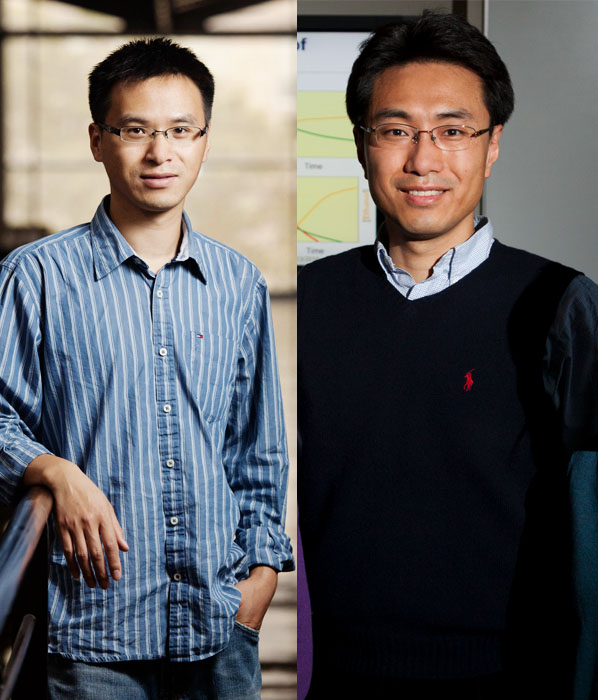Harnessing microbial communities’ division of labor for biofuel, chemical production
Much like human society, microbial communities have a division of labor. In these complex groups of microorganisms, different microbes are responsible for different tasks, such as the organization or delivery of cell functions.

Researchers at the IGB aim to understand more about the division of labor in microbial communities in a new project led by IGB faculty Ting Lu, an associate professor of bioengineering, and Yong-Su Jin, a professor of food science and human nutrition. Both are members of the IGB’s Biosystems Design and Microbiome Metabolic Engineering research themes, with Ting also a member of the Biocomplexity theme, and both are part of the Center for Advanced Bioenergy and Bioproducts Innovation (CABBI). Their work is funded by a $1.5 million grant from the U.S. Department of Energy.
The researchers’ goal is to uncover the design principles behind the division of labor in microbial communities. They also plan to use these principles to engineer the microbial communities to produce chemicals through a process known as metabolic engineering.
Metabolic engineering involves modifying cells in a way that increases their ability to produce certain substances, such as biofuels, food ingredients, and pharmaceuticals. This is typically done by using cells from a single species, but Lu said this has limitations.
Microbial communities, which contain a diverse range of species, can do things that individual species can’t do on their own, like increasing the strength of the ecosystem. This parallels what happens in nature.
“When we look at the microbes in nature, we know that they do not exist in a single cell or a single population,” Lu said. “Instead, they always present in the form of complex communities.”
For example, microbial communities in the soil can interact cooperatively with plants, forming a synergistic relationship.
The two organisms that will be studied in this research, lactic acid bacteria and baker’s yeast, also have a synergistic relationship.
Lactic acid bacteria are used in the production of cheese and yogurt, and baker’s yeast is used to bake bread. However, Lu said studies have found that when yeast is grown in a controlled environment, it’s often contaminated by lactic acid bacteria.
“Even if you do not intentionally put them together, it turns out they always coexist,” Lu said. “Which means, somehow, these two species like to stay together.”
Not only do they stay together, but they do so in a way that increases productivity and performance when it comes to producing chemicals.
“They’re helping each other, regarding the goal of enhancing growth and producing chemicals,” Lu said. “Therefore, we think this is a naturally occurring system which has industrial implications.”
Lu and Jin want to develop a quantitative understanding of this microbial ecosystem’s organization and design principles, and use this to modify the system to make chemical compounds, including one compound that is used in the production of drugs, cosmetics and industrial solvents.
Lu said this research will not only advance the fundamental knowledge of microbial communities, but it could be helpful in guiding the design of any synthetic microbial ecosystem.
“We hope that the knowledge we learn for this system could be general,” he said. “(It) could be utilized for designing any kind of ecosystem.”
